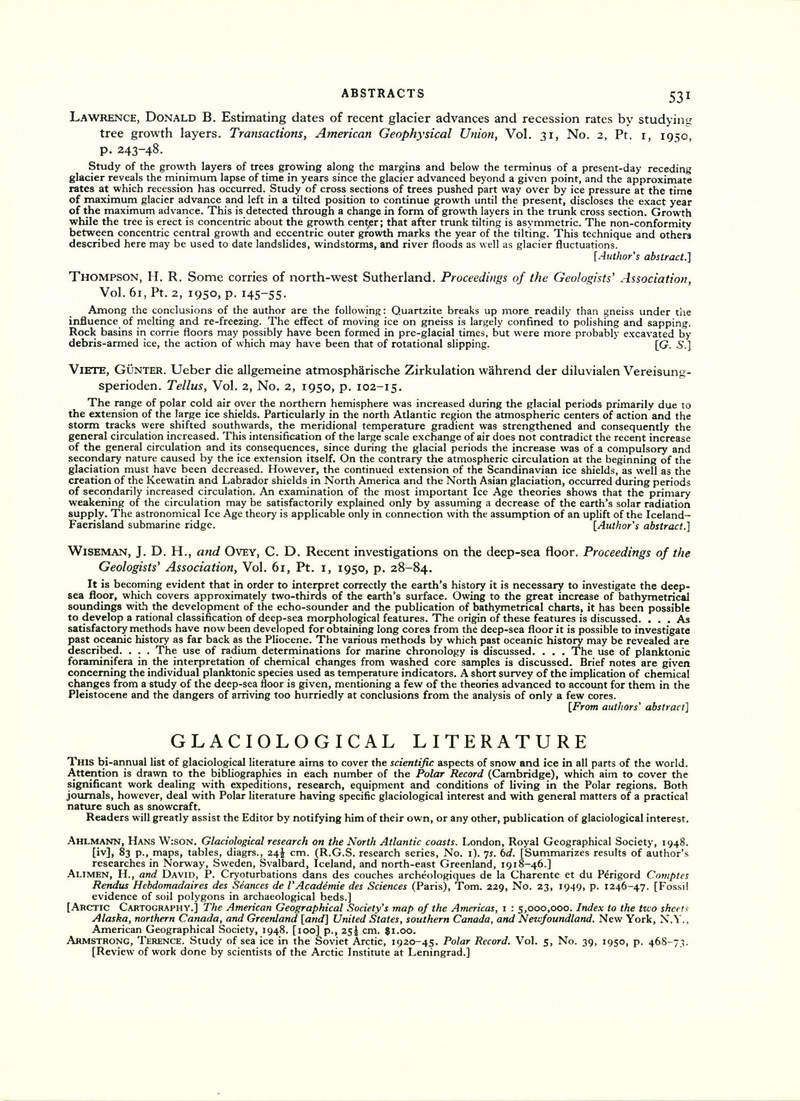Klebelsberg, R. Von.
Handbuch der Gletscherkunde und Glazialgeologie.
Wien,
Springer-Verlag,
1948–49, 2 vols., ilhis.. maps, tables, diagts., 25 cm. [Bd. 1, 1948, xii, 404 p., Bd. 2, 1949, vii, 405–1028 p. Bd. 1, comprehensive study of glaciology and glacial geology; Bd. 2, compendium of existing knowledge on glaciated and glacierized regions.]
Google Scholar 